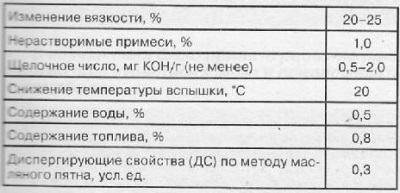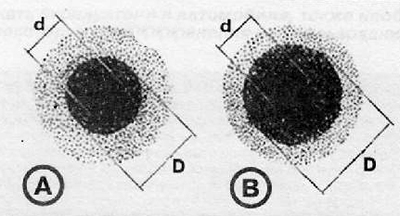
It should be noted that most of the rejection indicators of oil life can only be determined in laboratory conditions, however, parameters such as the change in oil viscosity and the value of dispersing properties (DC), are available even to a simple car enthusiast.
With a change in viscosity, everything is simple: if the oil becomes too thin during operation (drips off the dipstick like water when checking the level), it is obvious that its physical properties have changed and it is not able to fully perform its functions.
To determine the DS, the oil spot method is used, which is as follows:
- Immediately after stopping the engine, remove the dipstick and wipe it twice to make sure that any condensate is completely removed from the surface of the dipstick Insert the dipstick back until it stops and remove it again, then place a drop of oil from the dipstick on filter paper («blotter») or coffee filter (filter used for coffee makers).
- Lay the paper or coffee filter on a flat, horizontal surface so that the oil stain is evenly distributed over the test material. After 30 minutes, you can judge the condition of the engine oil.

A) Oil with a low level of dispersing properties,
IN) oil with a high level of dispersing properties.
Distinguish the central nucleus (d), corresponding to the spread of oil, and the zone (D) diffusion of oil-insoluble pollution products around the central core.
A decrease in the width of the diffusion zone indicates the operation of additives or the presence of water in the oil. DS oils are determined by the formula:

The value of DS less than 0.3 arb. is considered unsatisfactory. unit, in this case, an oil change is necessary.
Example

In this example, the diameter of the central region (d) is 18 mm, and the diameter of the outer region (D) - 41 mm.
Substituting these values into the formula, we get: DS = 1 - (182/412) = 1 - (324/1681) = 1 - 0,19 = 0,81.
The value obtained corresponds to the permissible range from 0.3 to 1. Therefore, the condition of the oil is quite satisfactory.

Also, the presence of large insoluble particles can be visually assessed by the oil stain. Area A corresponds to the normal state of the oil; oil stains in area B indicate that the oil will soon need to be changed: oil stains in area C indicate severe contamination of the oil - it needs to be changed.
